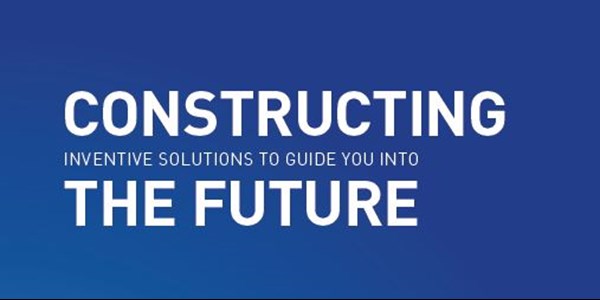12/20/2022
It's getting - figuratively speaking - tight! Not only in cities, but also in terms of climate protection. It no longer takes geopolitical upheavals or pandemics to explain resource shortages. It is clear to everyone: very little can remain as it is – not even in the construction industry.
It will take a lot more of everything to make the housing of the future more climate-conscious. More space, more material, more courage. Also for the use of sustainable building materials such as natural stone or wood, which is the current prevailing tendency. What many people don't know is that even concrete enables sustainable building, even if the concrete itself is not sustainable because of the cement it contains. Hardly any building in western civilization can still do 100% without cement and concrete. Cement is still the hydraulic binder without which - at least in our part of the world - stable construction is not possible. And yes: concrete can be replaced in many areas by wood, for example. Tiny houses are not the only impressive examples of the use of wood. But when it comes to constructing buildings for clinics, housing complexes, industrial plants or, for example, bridges for the next 100 or more years, concrete is the most economical solution at present and will remain so for quite some time.
There are other ways in which the construction industry can contribute to more sustainability. This raises in particular the question of how building materials must be produced in order to build structures that will last for eternity and at the same time guarantee that it does not prevent possible recycling of the materials used.
What modern production facilities do for sustainability
Regionality can also contribute to a positive environmental balance in the case of building materials; the shorter the transport routes, for example, the smaller the ecological footprint. And there is also a lot going on in terms of sustainability in the processing of building materials such as concrete: Weckenmann Anlagentechnik invests, for example, in improving production processes in order to increase the compaction of concrete in precast elements. This improves the statics of the component, increases the service life and thus makes the construction more sustainable.
If such systems are used across the board in the serial production of building components, then the costs of the manufactured building systems are reduced while quality is improved at the same time.
Compaction frequency and concrete formulation: Open your eyes when choosing a plant
Using magnetically clamped high-frequency compaction with direct injection into the mould shell, Weckenmann Anlagentechnik also presents a technology whose compaction frequency is oriented to the concrete recipe. Unquestionably, a very good compaction ratio for high-quality surfaces and an even distribution over the entire pallet surface. This results in first-class components with a long service life.
Besides: During the implementation of this new technology, the users were also taken into account: The noise reduction is reduced by up to 10 dB(A) compared to conventional systems. A system for optimised low-frequency compaction, which not only works quietly, but also is very quiet. Thanks to the programmable working modes "longitudinal", "transverse" or "circular", this machine has a material-protecting run-up phase. This has a positive effect on the overall service life of the system and is therefore not only a sensible investment, but also symbolizes sustainable mechanical engineering.
With regard to optimization approaches for increased area and volume efficiency, Weckenmann develops innovative plant concepts for new construction concepts. As a project and technology partner, Weckenmann Anlagentechnik realized a production plant for the manufacture of prestressed concrete elements in cooperation with a customer, which was awarded the Innovation Prize at bauma2022.
In addition to the corresponding mechanical engineering and plant construction expertise, Weckenmann also has grown know-how in process engineering and logistics for the construction industry. The experts have been enriching their many years of expertise in mechanical engineering, logistics and process engineering for the production of precast concrete elements with a great deal of innovative spirit for quite some time: Thus, Weckenmann is well prepared if the demand for high-quality precast concrete parts continues to increase disproportionately.

